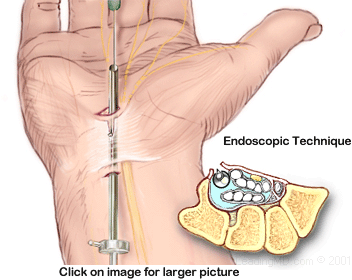 |
Endoscopic Technique
- This procedure uses a small tube that the doctor inserts through
a ½" incision in the patient's palm or wrist. A fiberoptic camera
in the tube allows the surgeon to see the underside of the transverse
carpal ligament, which can then be released with a special knife.
|






